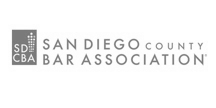If the owner of a property does not properly maintain it, or if a visitor to a building or area is not warned about present or potential dangers, accidents can happen. These accidents are known as “slips, trips and falls.” According to the National Floor Safety Institute, slips and falls account for 1 million visits to emergency rooms each year, which is 12% of all fall injuries. Indeed, the injuries people can sustain range from a small bruise to serious fractures or even death.
Very often, victims are able to prove negligence and liability in the owner of the property where the accident occurs. In this case, they may start a premises liability lawsuit. Damages awarded sometimes run in the millions of dollars.
There are many different types of slip and fall accidents. There are so many, in fact, that it would be hard to list them all. It is for this reason that it is easier to divide them into two clear categories: how they occur and where they occur. These two categories also cover most of the common types of slip and fall accidents.
How Slip and Fall Accidents Happen
When people, or legal professionals, talk about a slip and fall accidents, they often refer to them by describing how the accident occurred. Some of the more common examples include:
- Wet and slippery floors, which can occur due to spillages, tracked in weather elements, leakages, moisture collection and more. According to the Centers for Disease Control and Prevention, wet and slippery floor accidents are particularly common among health care workers. To prevent them, floors should be mopped regularly and signs should be placed to clearly warn foot traffic of the dangers.
- Cluttered floors, which are often found in offices, large shops and people’s homes. Clutter has been noted as a particular danger by the Occupational Safety and Health Administration (OSHA) and people should be committed to making sure that tripping hazards are promptly removed from floors.
- Icy walkways. It is the legal responsibility of the property owner to remove snow and ice and spread salt if icy conditions occur. This must be done on steps, sidewalks, parking lots, stairs and any other walkway.
- Damaged stairs and floors, particularly loose floorboards and tiles, torn mats and carpets and broken stair handrails or treads are a leading cause of slip and fall accidents. While domestic property owners should always make sure their own flooring is in good condition, commercial property owners also have this responsibility.
- Poor lighting is also a main cause of slips and falls. This can either be because ambient light is too bright or too dull, or because people block their own line of sight due to carrying large boxes. Moving from a properly lighted place to a dark place can lead to temporary loss of vision as well. Keeping an area properly lighted is vital to safety.
- Damaged sidewalks or other walkways that have cracks or gaps can also cause slips and falls. While determining liability in case of an accidents can be hard, the fact that accidents occur due to damaged sidewalks is undeniable.
- Ditches and potholes must always be marked, covered and/or filled, using warning signs and fencing. A recent case in Philadelphia saw a student fall into a manhole and sustain significant injuries. He was awarded $18 million in compensation.
Where Slip and Fall Accidents Happen
All of the hazards described earlier on how accidents occur will also happen somewhere. This is a second element used to describe types of accidents. Commonly, we see accidents occur in:
- Stores, where managers are legally responsible for making sure any hazards are removed promptly. This is true in malls, grocery stores, shopping centers and any other type of shop. They must clean up spills and remove clutter, as well as place warning signs if any dangers are present.
- Restaurants, both fast food and sit down, are at increased risk of clutter, spills, debris and trash. The owner is responsible for making sure these are all cleaned up.
- Stadiums, arenas and theaters, where large public performances take place. In many cases, these areas have various levels, each of which is interconnected by stairways, ramps, elevators and escalators. Each of these can present a hazard if they are not properly maintained, well-lit and free of clutter. Similarly, the seating areas can pose dangers as well.
- Parks and playgrounds are a prime location for injuries in children, although adults are also at risk of hurting themselves. Not only do the play equipment and the benches have to be properly maintained, workers’ tools and maintenance equipment also has to be cleared away.
- Workplaces are a very common location for injury. Indeed, the leading cause of death in the construction industry is the fall accident. While not all falls are deadly, injuries can be very severe and they can happen in any industry.
- People also fall at home. This is a particular danger for the elderly. Falls can happen due to poorly maintained walkways, spillages, clutter and so on. The injuries that are sustained can be very severe, particularly for older people. 60% of serious injuries and deaths as a result of a fall occur in people over the age of 75.
Slip and Fall Injury Lawyer
Easily find Slip and Fall Injury Lawyers serving California victims.









